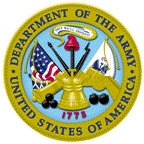United States Department of Defense
Document Type
Article
Date of this Version
2013
Citation
The Journal of Emergency Medicine, Vol. 44, No. 5, pp. 962–969, 2013; http://dx.doi.org/10.1016/j.jemermed.2012.11.006
Abstract
Background: There is great disparity in the education, experience, and staffing requirements for civilian and Army aeromedical transports (AMT). Objective: This study sought to determine if medical skills beyond the standard training for Army flight medics were indicated and being performed on Army AMT missions. As a secondary measure, the percentage of indicated interventions performed by basic Emergency Medical Technician (EMT-B) and paramedic (EMT-P) flight medics were compared. Methods: This was a retrospective review of Army AMT charts including patients transported by an EMT-B-staffed unit in Iraq and an EMT-P-staffed unit in Afghanistan from July 2008 to June 2009. Charts were reviewed independently by two Emergency Medicine board-certified Army flight surgeons. Results: Of 984 interventions found to be indicated on the 406 charts that met inclusion criteria, 36% were rated as EMT-P level. Seventeen percent were indicated but not performed. EMT-Bs failed to perform indicated procedures 35% of the time vs. 3% in the EMT-P group (p < 0.001). For paramedic-level procedures, EMTBs failed to make 76% of appropriate interventions, compared to <1% in the EMT-P group (p < 0.001). Conclusions: There seems to be a substantial number of procedures beyond the scope of standard Army flight medic training being required for Army AMT missions. It seems that when advance interventions are indicated, those trained to the EMT-P level perform them significantly more often than those trained to Army standard. Conclusions: Based on the findings of this study, the authors suggest the Army consider adopting the standards required for civilian AMT.


